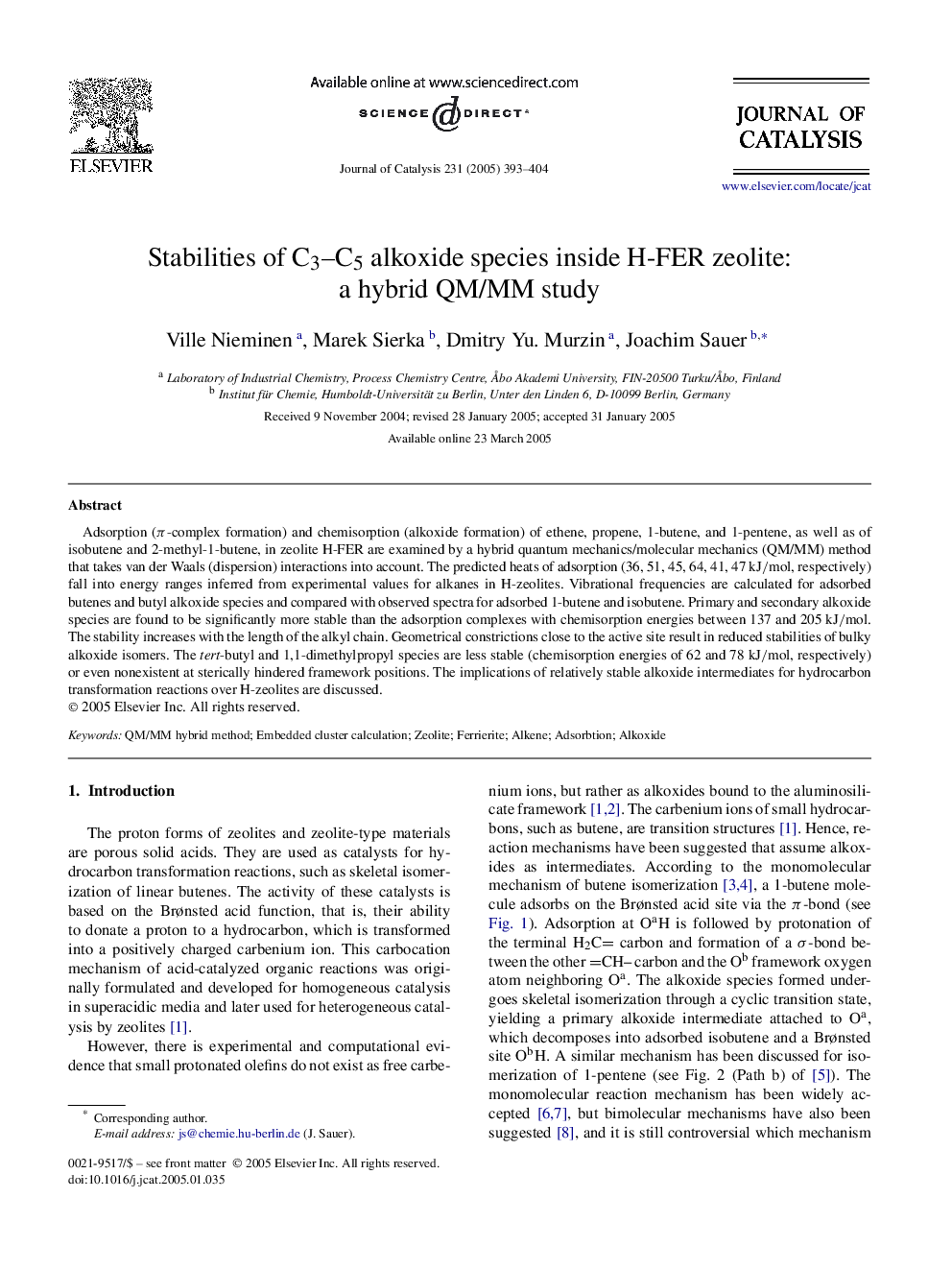| Article ID | Journal | Published Year | Pages | File Type |
|---|---|---|---|---|
| 10244613 | Journal of Catalysis | 2005 | 12 Pages |
Abstract
Adsorption (Ï-complex formation) and chemisorption (alkoxide formation) of ethene, propene, 1-butene, and 1-pentene, as well as of isobutene and 2-methyl-1-butene, in zeolite H-FER are examined by a hybrid quantum mechanics/molecular mechanics (QM/MM) method that takes van der Waals (dispersion) interactions into account. The predicted heats of adsorption (36, 51, 45, 64, 41, 47 kJ/mol, respectively) fall into energy ranges inferred from experimental values for alkanes in H-zeolites. Vibrational frequencies are calculated for adsorbed butenes and butyl alkoxide species and compared with observed spectra for adsorbed 1-butene and isobutene. Primary and secondary alkoxide species are found to be significantly more stable than the adsorption complexes with chemisorption energies between 137 and 205 kJ/mol. The stability increases with the length of the alkyl chain. Geometrical constrictions close to the active site result in reduced stabilities of bulky alkoxide isomers. The tert-butyl and 1,1-dimethylpropyl species are less stable (chemisorption energies of 62 and 78 kJ/mol, respectively) or even nonexistent at sterically hindered framework positions. The implications of relatively stable alkoxide intermediates for hydrocarbon transformation reactions over H-zeolites are discussed.
Related Topics
Physical Sciences and Engineering
Chemical Engineering
Catalysis
Authors
Ville Nieminen, Marek Sierka, Dmitry Yu. Murzin, Joachim Sauer,
